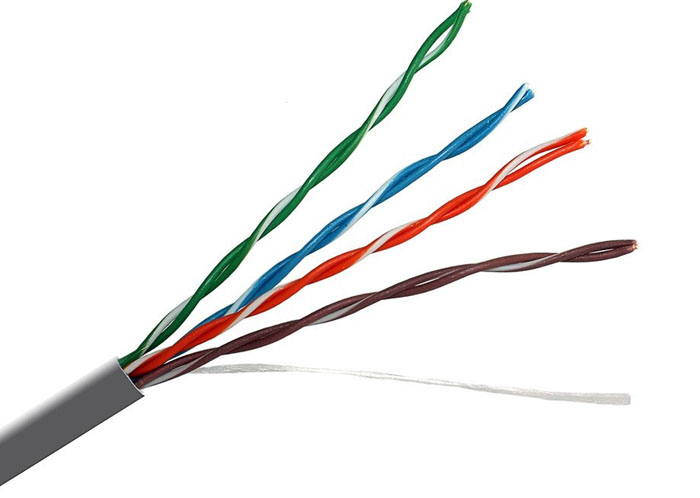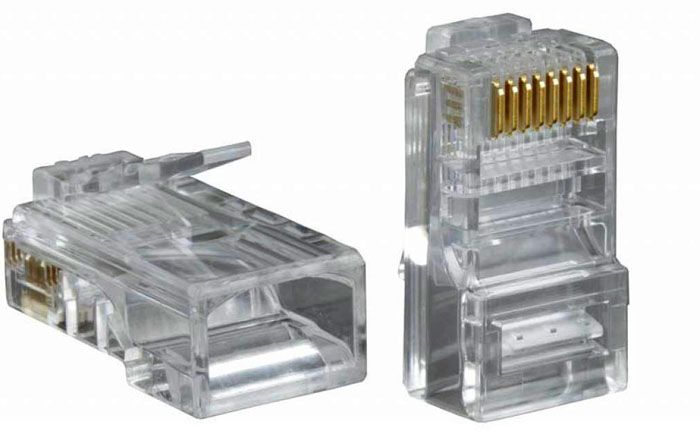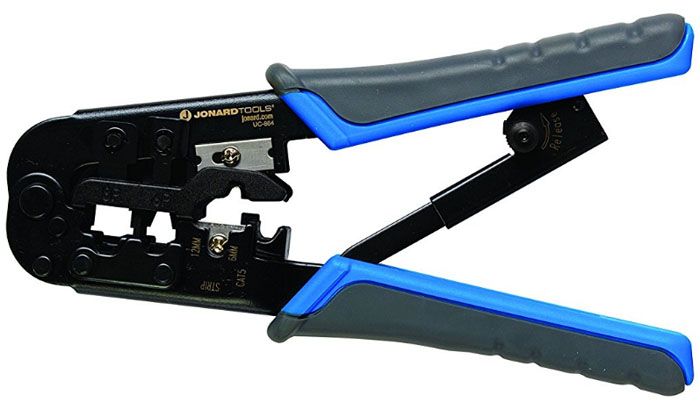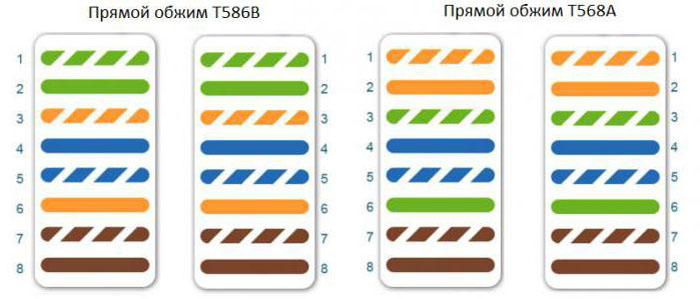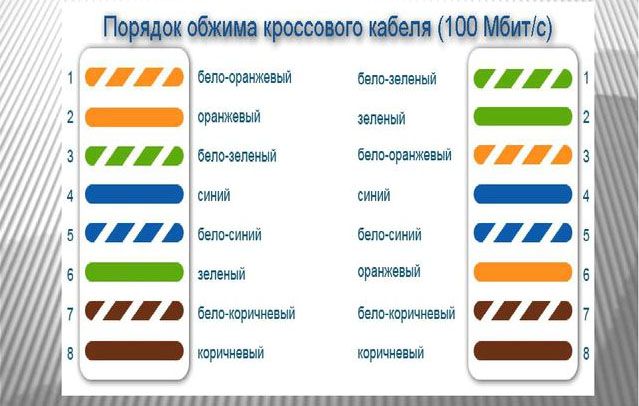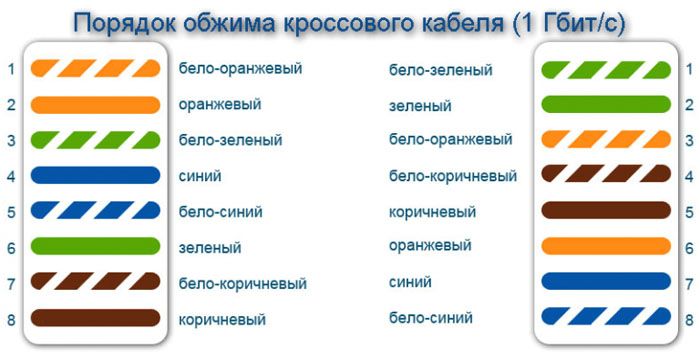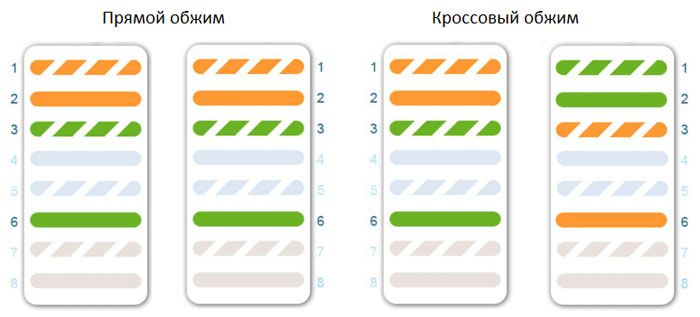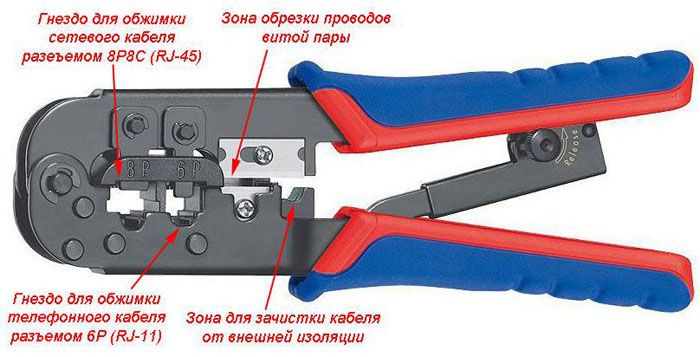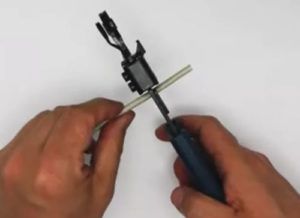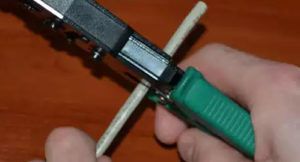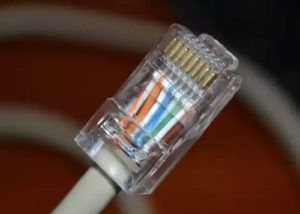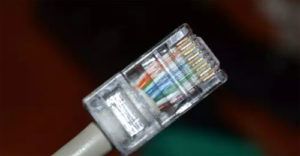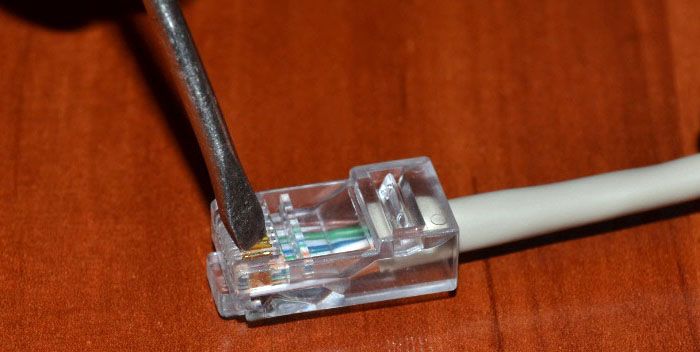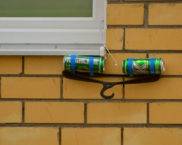When you really need it: how to independently and correctly crimp a twisted pair
Twisted pair is a type of cable consisting of a certain number of pairs of conductors made of insulated wire, twisted in pairs with a given number of turns per meter of length and placed in a common sheath. This type of cable is used in low-current networks such as telephony, Internet and other communication communications. To connect such a cable with other equipment, it is necessary to crimp it, which is due to the design of the conductors used and the provision of a reliable connection. Twisted pair crimping is the topic of today's review by our editorial office.
The content of the article
What is twisted pair compression and why is it needed
The presence of pairwise twisting of conductors made of stranded copper allows to reduce their mutual influence (pickup) on each other, because their purpose is different. The colors of each core of the cable (conductor) are different, which allows them to be disconnected without problems and used for their intended purpose. Twisted pair crimping is a performance termination of conductors, providing reliable and convenient connection to various types of equipment and communication devices (personal computer, switch, router, etc.). To perform crimping, special RJ45 connectors are used, the correct connection of which to the conductor (in the connector connectors) will be the key to the successful operation of a local computer or other network assembled using this type of cables.
What tool is needed to crimp twisted pair
How to crimp a communication cable using RJ45 connectors is the question that arises before the user when it becomes necessary to create a local network with his own hands or to repair an existing one.In order to crimp a cable using an RJ45 connector, it is necessary to use a special tool designed for this purpose, which is very important to ensure a reliable contact connection. These works can be performed without such a tool, which is permissible in some cases, but undesirable. As a special tool, RJ45 crimpers are used, which are pliers equipped with devices for crimping various contacts, stripping insulation from conductors, and cutting pliers for cutting them.
The presence of a crimper is sufficient to carry out the entire range of twisted-pair cable termination operations.
Twisted pair pinout diagrams
Pinout is an operation to pinout a twisted pair cable with a color-coded description of each pin of the electrical connection of an RJ45 connector. The pinout is done at both ends of the cable and should be consistent with existing standard spinning schemes: straight and crossover. The direct circuit is used when connecting different types of equipment, and the cross (cross) is of the same type. For cables with a different number of pairs of conductors (cable cores), the pinout is performed in different ways, therefore, it is necessary to consider the most common circuits in everyday life: 8 and 4 pairs of conductors.
Color scheme for crimping twisted pair 8 cores
The color scheme when performing pinout of a twisted pair, consisting of 8 wires, is shown in Figure 4, which shows two standard options for performing work:
- type Т586В - both sides of the cable have the contact order: white-green, green, white-orange, blue, white-blue, orange, white-brown, brown;
- type Т568А - both sides have the order of contacts: white-orange, orange, white-green, blue, white-blue, green, white-brown, brown.
Type Т586В is the most common, therefore it is more preferable for independent work. When crossing the order of the pinout, it should be borne in mind that the color schemes are different for cables with different speed.
For a 100 Mbps crossover cable, the color scheme looks like this:
- one side - white-green, green, white-orange, blue, white-blue, orange, white-brown, brown;
- the second side is white-orange, orange, white-green, blue, white-blue, green, white-brown, brown.
For a 1 Gbps crossover cable, the color scheme looks like this:
- one side - white-orange, orange, white-green, blue, white-blue, green, white-brown, brown;
- the second side is white-green, green, white-orange, white-brown, brown, orange, blue, white-blue.
4-core twisted pair crimp color scheme
For termination of cables consisting of 4 cores, connectors are used, similar to a twisted pair, consisting of 8 cores. The only difference is that some of the contacts remain unused. The color scheme in this case is shown in the following figure.
For direct crimping, the color scheme looks like this:
- one side - white-orange, orange, white-green, green;
- the second side is white-orange, orange, white-green, green.
For cross crimping, the picture is somewhat different and looks like this:
- one side - white-orange, orange, white-green, green;
- the second side is white-green, green, white-orange, orange.
How to crimp a twisted pair cable
As it was already written above, to perform the compression of the twisted pair, a special tool is used - a crimper, the purpose of the individual elements of which is shown in the following figure.
In this case, work using a special tool is performed in the following sequence:
Work is carried out in the same way on both ends of the cable in accordance with the pinout color scheme.
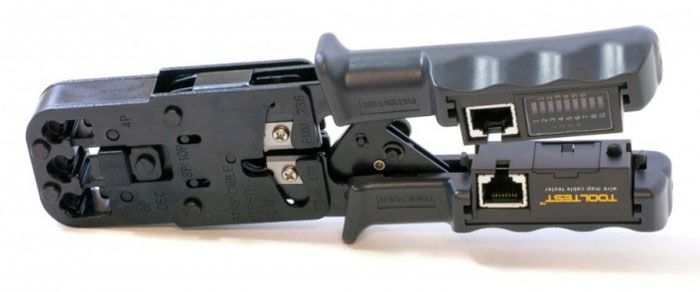
The types and design of crimpers may vary, which determines their functionality and, accordingly, cost
How to crimp an internet cable at home without a tool
If the Internet is currently in almost every home, but not every user has a special tool, which is due to the narrow focus of its use. Crimpers are bought only by specialists for whom work with twisted pair or other types of cable products is the main type of professional activity. In the absence of a crimper, Russian ingenuity and the presence of an ordinary locksmith tool come to the rescue. An ordinary knife or pliers (nippers) are used for cutting and stripping the cable veins, and for crimping - a screwdriver with a small slot. The size of the slot must be such that it can be placed on each contact of the connector without damaging the plastic jumpers between them.
Also for these purposes, you can use a core, a metal scriber or other thin and sharply sharpened tool. The work is carried out in the same way as in the case of using a special tool, with the only difference that to perform crimping, the existing tool is placed on contact, after which it is pressed by striking this tool with a hammer.



